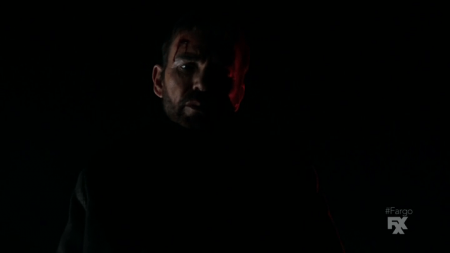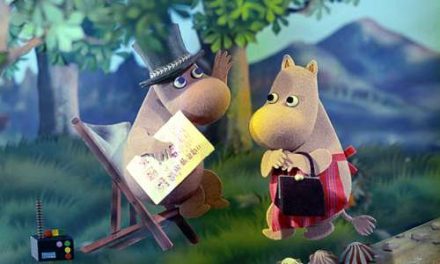This blog sketches out some of the ideas that account for recent TV drama’s formal strategies due to the growing complexity of television narrative.
High-end television drama depends on developments as the event concept for TV drama has evolved and, enabled by increased budgets, seriality and production values on television, drama became a key marker of quality in prime time programming.[i] At the same time, there has been a long process of forming judgements about value in television drama. More recently, this can be understood to be a turn towards the cinematic and the argument that television drama has come to flaunt and display style.[ii] Or it can be understood as the creation of sophisticated modalities combined with the long form narrative on TV, which suggests generic expansion and greater interpretative flexibility.[iii] In these ways, tendencies and changes in high-end television drama are a dynamic exchange between programme makers and borrowings from other forms both within television and outside it, including cinema.
Historically, the notion of evaluation in film studies is possible after a process of description and analysis of mise en scène but this has to be modified for television. If the visual and aural sophistication of recent high-end television drama suggests the possibility of new methodological approaches to aesthetics, this is linked to types of narrative. I would like to argue that while visual sophistication within television has been responsible for greater narrative scope the possibility of a grand aesthetic design in drama that flaunts or produces a self-conscious style is less sure.
Structurally and formally, Fargo (2014-present) depends on the certainty created by the cohesive systems of production design and performance, as well as genre with its semantic and syntactic conventions, amid increased uncertainty created by strategies of narrative complexity. Fargo rests upon the closeness of the macabre and the everyday, while maintaining formal restraint. If it invites audience interpretation at key moments, it balances narrative ruminations with an insistence on narrative closure within the mini-series. On the one hand, the stories in Fargo are a prelude to creating complex character genealogies that relate the characters together in unexpected ways. However, if formal restraint exists, de-stabilized subjectivities within the narrative as the entwined personal history of its main characters are explored, are often approached using an under-stated sensibility.
Other instances of the same combination of multiple storylines and a highly controlled style in high-end drama appear in shows such as The Young Pope (2015). One feature of such high-end drama in Fargo and The Young Pope is often a system of distant framing and use of off-screen space, as well as tonal control and aesthetics that include detailed textures within the imagery. In Fargo, the texture of the snow reduces the chaos suggested by the narrative and imposes stillness. If storylines in many high-end dramas suggest ‘contradictory truths’ in a world that appears unknowable and unpredictable, the camera style is the blank stare of the witness-observer.
Television Poetics
In a future article about high-end television and how we might evaluate it, Dominic Lees and I aim to include a close textual reading of a television show. We aim to make aesthetic judgments about it without positing arguments that shows assigned high production values should be understood as formally superior products because of an excessive or flaunted style.
For example, in the first series of Fargo (2014), the noir themes associated with the genre are not necessarily married to a noir style. For example, shot on the ARRI Alexa, soft lighting becomes the key to the aesthetics both indoors and outdoors, although this causes problems with maintaining sufficient detail in the shots that are important in the design of the show. The Alexa was one of a new type of digital camera that provided the producers of high-end drama with the opportunity to achieve a ‘filmic’ look and the qualities of 35mm film. In Fargo, softly lit images are arresting because of an ability of the camera to achieve greater colour and contrast control that serves to accumulate a wealth of detail.
We will argue that the development of production techniques in high-end television drama have not led to a simple binary that produces images as either an immersive form of cinematic spectacle or which are within the realist traditions that preserves a sense of the everyday normality historically associated with television. Instead, scenes which might often be considered to be dramatic become de-narrativised and depict people within their settings, inviting a contemplative gaze. It is for this reason that Fargo’s apparently ludological entanglements do not clearly instigate the show’s narrative puzzle as may have happened in older dramas. Rather, highly controlled images that no longer seek to maximise narrative clarity confront viewers with ontological questions about the nature and reliability of personal experience.
Besides spectacle and realism, themes and modes that in high-end drama have become more prominent include an emphasis on the self. In Fargo, using the character of Lorne Malvo played by Billy Bob Thornton, the phenomenological sense of presence through which the viewer feels corporally linked to the world raises questions about embodiment and subjectivity in the personae of the enigmatic drifter-assassin. Malvo finds a fascination with an entropic universe as the stillness of the camera suggests an alternative pictorial approach more aligned to independent film.
In this blog, rather than repeat the claim that film is the prerequisite for many of the innovations within prestigious television drama, the purpose has been to argue that high-end TV drama does not always act as a moniker for high production values and feature cinematography. In shows such as Fargo and The Young Pope, instead of providing spectacle or stylistic emphasis designed for narrative clarity, a carefully designed set of aesthetics permits an under-stated sensibility within a TV series to play on the possibilities of an indefinite number of events.
Endnotes
[i] Robin Nelson, State of Play: Contemporary high-end TV drama, 2007.
[ii] John Caldwell, Televisuality: Style, Crisis and Authority in American Television, 1995.
[iii] Michael Z. Newman and Elana Levine, Legitimating Television: Media Convergence and Cultural Status, 2012.
Max Sexton is a lecturer at the University of Surrey and independent scholar, where he currently teaches television and film theory. He is interested in the links between aesthetics and narrative, particularly in how they can be used to de-stabilize genre and produce ‘playful encounters’ in television drama and film. His last book Secular Magic and the Moving Image includes debates about play and aesthetics in TV shows that feature conjuring, escapology, and similar wondrous acts.







